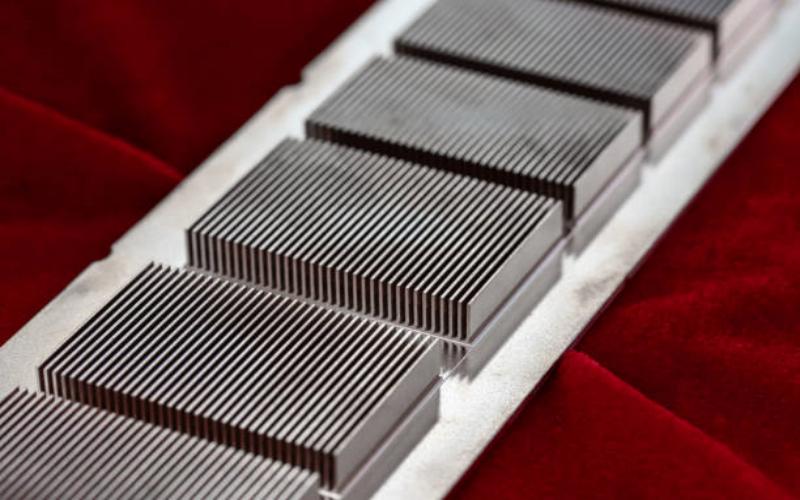The Composition of Computer Heat Sinks: Exploring the Materials Used
Computer heat sinks play a crucial role in maintaining the temperature of your computer's central processing unit (CPU), as well as other components that generate heat. These small, yet essential, devices are designed to dissipate heat efficiently. But have you ever wondered what materials are used to create these heat sinks? In this article, we will delve into the composition of computer heat sinks, exploring the different materials used and their benefits.
1. Aluminum: The Most Common Material
When it comes to computer heat sinks, aluminum is the most commonly used material. This lightweight metal offers excellent thermal conductivity, allowing heat to transfer quickly from the CPU to the fins of the heat sink. Aluminum is also cost-effective and readily available, making it an ideal choice for mass production.
2. Copper: An Efficient Heat Conductor
Copper is another popular material used in computer heat sinks. Known for its exceptional thermal conductivity, copper is highly efficient in transferring heat away from the CPU. While copper heat sinks tend to be more expensive than their aluminum counterparts, they provide superior cooling performance, making them ideal for high-end computers and overclocked systems.
3. Copper-Base with Aluminum Fins: The Best of Both Worlds
Combining the benefits of both copper and aluminum, some heat sinks feature a copper base with aluminum fins. This design allows for efficient heat transfer from the CPU to the copper base, while the aluminum fins provide a larger surface area for heat dissipation. These hybrid heat sinks offer a cost-effective solution with improved cooling performance.
4. Heat Pipes: Enhancing Heat Transfer
Heat pipes are often incorporated into advanced computer heat sinks to enhance heat transfer. These sealed copper pipes contain a small amount of liquid, typically water or a coolant, which vaporizes when exposed to heat. The vapor moves along the pipe, reaching the fins where it condenses and releases the heat. Heat pipes significantly improve the overall cooling efficiency of the heat sink.
5. Vapor Chambers: Efficient Cooling for High-Performance Systems
Vapor chambers, similar to heat pipes, are used in heat sinks to further enhance cooling performance. These flat, sealed chambers are made of copper or aluminum and contain a small amount of coolant. Vapor chambers are particularly effective in high-performance systems where heat generation is intense, ensuring optimal cooling and temperature regulation.
6. Graphite: Lightweight and Effective
Graphite is a lightweight and durable material that is often used in computer heat sinks. It has excellent thermal conductivity and can be easily shaped, allowing for intricate designs and efficient heat dissipation. Graphite heat sinks are commonly found in small form factor computers, where space is limited but cooling is still essential.
7. Ceramic: Heat Dissipation with Electrical Insulation
Ceramic heat sinks provide both heat dissipation and electrical insulation. Made from ceramic materials such as aluminum oxide or beryllium oxide, these heat sinks are ideal for applications where electrical components are in close proximity to the heat sink. Ceramic heat sinks offer high thermal conductivity, low electrical conductivity, and excellent resistance to corrosion.
8. Thermoelectric Coolers: Active Heat Transfer
Thermoelectric coolers, also known as Peltier coolers, are unique heat sinks that use the Peltier effect to actively transfer heat away from the CPU. These coolers consist of a ceramic plate sandwiched between two layers of semiconductor material. When an electric current flows through the semiconductor layers, one side becomes hot while the other side cools down, effectively removing heat from the CPU.
9. Composite Materials: Customized Cooling Solutions
Some computer heat sinks utilize composite materials to meet specific cooling requirements. These materials are engineered by combining different metals, ceramics, or polymers to create a customized cooling solution. Composite heat sinks offer the flexibility to optimize both thermal conductivity and mechanical strength, catering to the unique needs of different computer systems.
10. Advances in Materials and Innovations
The field of computer heat sinks continues to evolve, with ongoing research and development into new materials and innovations. From carbon nanotubes to liquid metal alloys, scientists and engineers are exploring alternative materials that offer even better thermal conductivity and cooling performance. As technology progresses, we can expect to see new and exciting materials being used in the creation of computer heat sinks.
computer heat sinks, heat sink materials, aluminum heat sinks, copper heat sinks, hybrid heat sinks, heat pipes, vapor chambers, graphite heat sinks, ceramic heat sinks, thermoelectric coolers, composite heat sinks, material innovations What are computer heat sinks made of? Exploring the Materials Discover the different materials used in computer heat sinks, including aluminum, copper, hybrid designs, heat pipes, graphite, ceramic, thermoelectric coolers, and composite materials.

